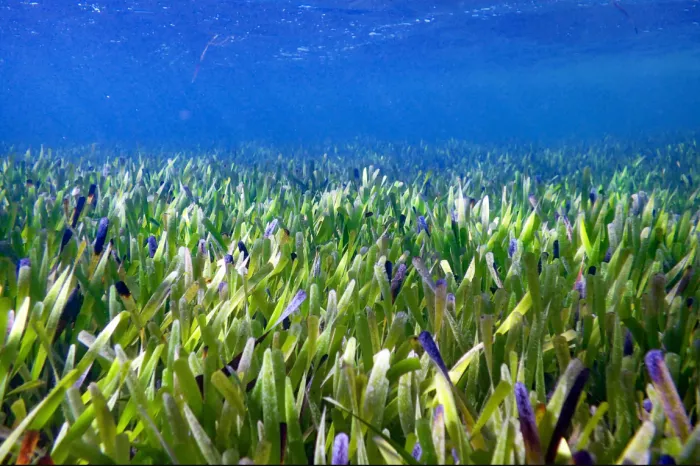According to new atlas report, researchers found what seems to be the largest plant in the world - a sea grass meadow on the coast of Western Australia, with a total area of 200 square kilometers** The whole meadow is formed by the growth of only one seedling, which is transmitted through self cloning.

At the beginning of the project, scientists from the University of Western Australia and Flinders University began to study the genetic diversity of seagrass grassland in Shark Bay area. The team collected bud samples from several different environments throughout the region and then examined 18000 genetic markers to create plant profiles.
"The answer surprised us there was only one!" Jane edgeloe, lead author of the study, said. "That's it. Just one plant expanded 180 kilometers (112 miles) in Shark Bay, becoming the largest known plant on the earth. The existing 200 square kilometers of banded weed meadow seems to have expanded from a single, colonized seedling."
The previous record holder for the largest plant was a poplar tree in Utah, nicknamed Pando, which cloned itself into a similar community connected by a root system. Pando's area is only 0.4 square kilometers, which means that the area of seagrass is more than 400 times that of Pando. The team also calculated that seagrass is at least 4500 years old and found out how it manages to cope with environmental changes in the absence of genetic diversity. It is a polyploid plant, which means that it actually contains two complete genomes from its parent plant, rather than half.
"Polyploid plants usually live in places with extremely poor environmental conditions and are usually sterile, but if they can continue to grow without interference, this giant seaweed can do it," said Dr. Elizabeth Sinclair, senior author of the study. "Even without successful flowering and seed production, it seems to be really resilient, experiencing a wide range of temperature and salinity, coupled with extreme high light conditions, which together are usually highly stressful for most plants."
The research team plans to further investigate the plant to uncover more secrets about how it thrives.
The study was published in the journal Proceedings of the Royal Society B.